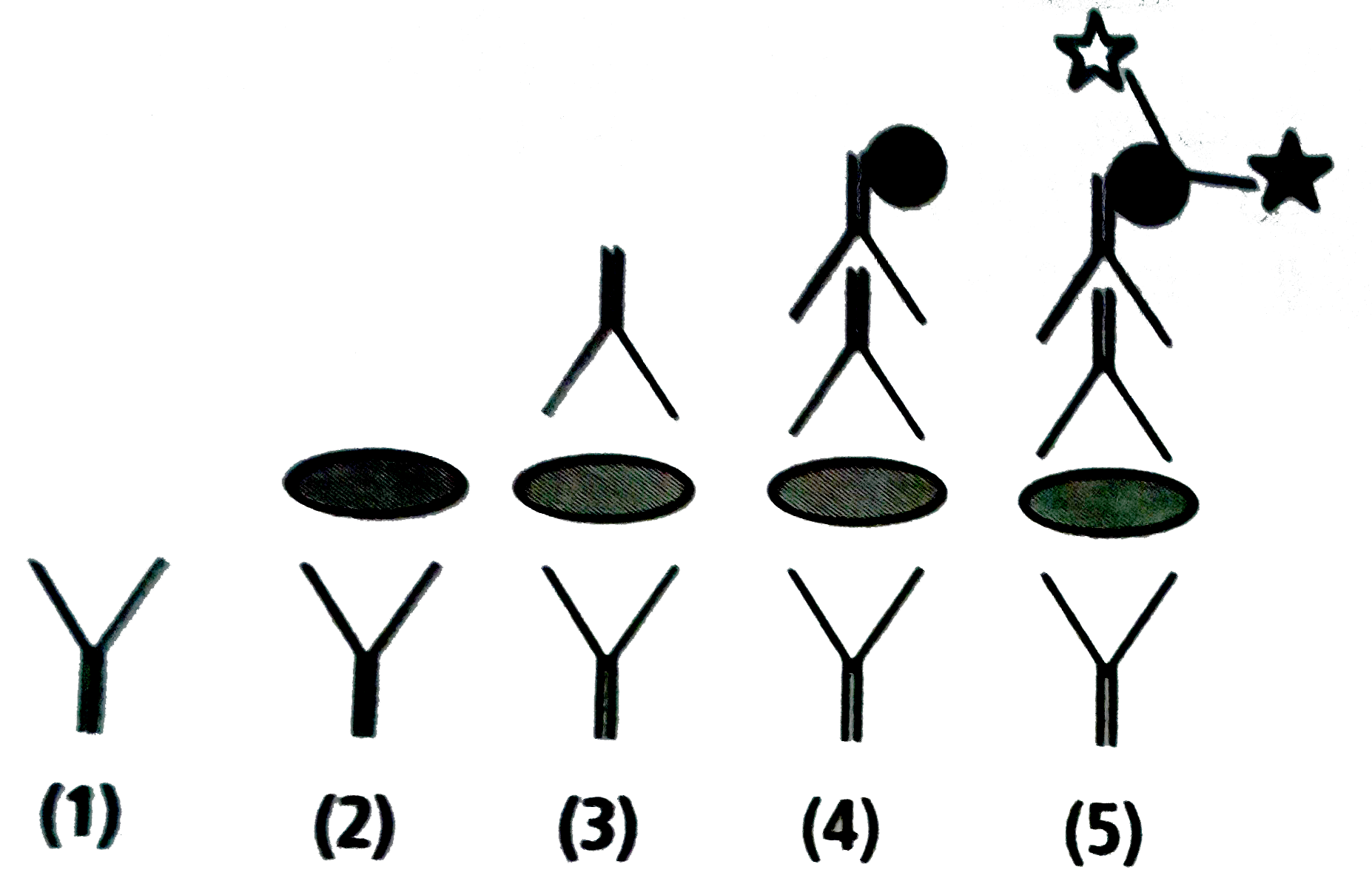ELISA
Uses complement mediated cell lysis
Uses rediolabelled second antibody
Involves addition of substrate which is converted into coloured end product
Requires RBCs
The correct Answer is:C
Step-by-Step Solution for ELISA
1. Understanding ELISA: ELISA stands for Enzyme-Linked Immunosorbent Assay. It is a plate-based assay technique used for detecting and quantifying proteins, antibodies, hormones, and peptides.
2. Principle of ELISA: The main principle behind ELISA is the interaction between antigens and antibodies. In this assay, the target antigen is immobilized on a plate.
3. Addition of Antibodies: After the antigen is immobilized, a primary antibody is added. This antibody binds specifically to the target antigen, forming an antigen-antibody complex.
4. Enzyme Conjugation: The primary antibody is linked to an enzyme. This enzyme plays a crucial role in the next step of the assay.
5. Substrate Addition: A suitable substrate is added to the plate. The enzyme linked to the primary antibody reacts with this substrate, resulting in a color change.
6. Color Change as Detection: The color change indicates the presence and quantity of the target antigen. This is the key outcome of the ELISA process.
7. Evaluating the Options:
- Option 1: "Uses complement-mediated cell lysis" - Incorrect, as ELISA does not involve cell lysis.
- Option 2: "Uses radiolabeled second antibody" - Incorrect, as ELISA typically does not use radiolabeled antibodies.
- Option 3: "Involves addition of substrate which is converted into colored end product" - Correct, as this is a fundamental part of the ELISA process.
- Option 4: "Requires RBC" - Incorrect, as red blood cells are not required for ELISA.
8. Conclusion: The correct answer is Option 3: "Involves addition of substrate which is converted into colored end product."
- Option 1: "Uses complement-mediated cell lysis" - Incorrect, as ELISA does not involve cell lysis.
- Option 2: "Uses radiolabeled second antibody" - Incorrect, as ELISA typically does not use radiolabeled antibodies.
- Option 3: "Involves addition of substrate which is converted into colored end product" - Correct, as this is a fundamental part of the ELISA process.
- Option 4: "Requires RBC" - Incorrect, as red blood cells are not required for ELISA.
Topper's Solved these Questions
- PRINCIPLES AND APPLICATIONS OF BIOTECHNOLOGYBOOK - DINESH PUBLICATION ENGLISHCHAPTER - PRINCIPLES AND APPLICATIONS OF BIOTECHNOLOGYEXERCISE - CYG
10 Videos
- PRINCIPLES AND APPLICATIONS OF BIOTECHNOLOGYBOOK - DINESH PUBLICATION ENGLISHCHAPTER - PRINCIPLES AND APPLICATIONS OF BIOTECHNOLOGYEXERCISE - Brain Teasers
5 Videos
- PRINCIPLES AND APPLICATIONS OF BIOTECHNOLOGYBOOK - DINESH PUBLICATION ENGLISHCHAPTER - PRINCIPLES AND APPLICATIONS OF BIOTECHNOLOGYEXERCISE - Brain Teasers
5 Videos
- PLATYHELMINTHES-THE FLAT WORMSBOOK - DINESH PUBLICATION ENGLISHCHAPTER - PLATYHELMINTHES-THE FLAT WORMSEXERCISE - check your grasp
9 Videos
- REPRODUCTION IN ORGANISMSBOOK - DINESH PUBLICATION ENGLISHCHAPTER - REPRODUCTION IN ORGANISMSEXERCISE - Check Your Grasp
19 Videos
Similar Questions
Here some terms and their explanation are given. How many are incorrect ?
(a) AIDS: Acquired immuno deficiency syndrome
(b) HIV: Human immuno deficiency virus
(c ) ELISA: Enzyme linked inductive steps assemble
(d) NGOs: Non-governmental organisation
(e) MALT: Mucosal associated lymphoid tissue
(f) LSD: Lysergic Acid diacetylmorphine
(g) NACO: National AIDS control Organisation
View SolutionWhich of the following statements are correct ?
1. PCR is now routinely used to detect HIV in suspected AIDS patients.
2. A single - stranded DNA or RNA , tagged with a radioactive molecule (probe) is allowed to hybridize to its complementary DNA in a clone of cells followed by detection using autoradiography.
3. ElISA is based on the principle of antigen - antibody interaction.
4. Today transgenic models exist for many human diseases such as cancer , cystic fibrosis , rheumatoid arthritis, and Alzheimer's
View Solution
Knowledge Check
Assertion : ELISA test is based on antigen-antibody interactions where a pathogen can be detected by the presence of antibodies (proteins,glycoproteins, etc) on it
Reason : The pathogen antibody to be identified is immobilised on the surface of specially constructed ELISA plates and is then tested.AIf both assertion and reason are true and reason is the correct explanation of assertionBIf both assertion and reason are true but reason is not the correct explanation of assertionCIf assertion is true but reason is falseDIf both assertion and reason are falseWhich of the following types of ELISA contain the following steps ?
Antigen binding,Blocking, primary antibody,Secondary antibody,Enzyme-linked antibody, Substrate,Colorimetric reading (Represented in diagram)
 ADirect ELISABIndirect ELISACCompetitive ELISADSandwich ELISA
ADirect ELISABIndirect ELISACCompetitive ELISADSandwich ELISAMatch column I with column II and select the correct option from the given codes
Column IColumn IA.α−1−antitrypsin(i)AIDSB.Transposon(ii)Gene therapyC.ELISA(iii)EmphysemaD.Retroviral vector(iv)Mobile genetic elementAA-(iii),B-(iv),C-(ii),D-(i)BA-(iii),B-(ii),C-(iv),D-(i)CA-(ii),B-(iv),C-(iii),D-(i)DA-(i),B-(iv),C-(ii),D-(iii)
